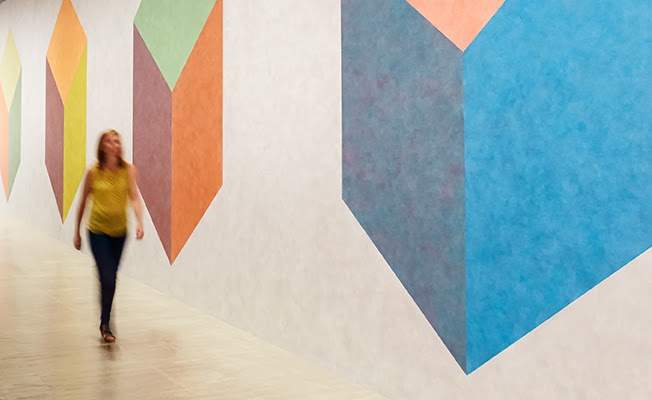Sol LeWitt: Your Mind is Exactly at That Line
Come into the Sol LeWitt's world of ideas. It's a pretty nice place. This is big work for quiet contemplation.
Overview
Come into the Sol LeWitt’s world of ideas. It’s a pretty nice place one of artworks devoid of decoration, but not of beauty. The beauty's there, just look harder: it's in the systematic and the cerebral.
Massive kudos to the AGNSW for allowing free entry to Your Mind is Exactly at That Line, a retrospective from the artist who dubbed the term ‘conceptual art’ and indelibly imprinted himself on the rest of 20th and 21st century art history.
LeWitt was all about the idea, the concept, taking precedence over the execution of the artwork. He aimed to scrub out all sign of the artist’s hand and was obsessed with linear, geometrical forms the ones least open to expressive interpretation. As you'd expect from someone so devoted to paring back and shaving down, the works in exhibition ranges from the dull-y intellectual to the quietly sublime.
LeWitt spent years dedicating his artistic practice to the square that most basic of geometric forms. During his life and since his death in 2007, he permitted other artists or even technicians to recreate his works from instructions, and some local ones have done so in the AGNSW (Wall Drawing No. 303), in the same way that musicians interpret composers’ works.
Think of these massive instructed wall drawings as ‘linear ultra’. They’re cold, impenetrable and alienating in the same way that some installation art can be. But that's LeWitt's aim: to extinguish all emotion from art. But it's not all slick and distant. Other works like Wall Drawing #1274 invite the viewer into what seems like an expansive cosmic oblivion, but up close is really fine-point irregular curves. Either way, those whose tastes curve to narrative imagery, sublime symbolism and romantic spontaneity should look elsewhere.
As with all things careful and considered, pleasure is derived from diving into the detail, like the tiny cubic white-on-white shadows of Tower 1, 2, 3, 4, 5, 6, 7 (2000). It’s reductive, essential, clinical. And yet amidst the OCD-like attention to detail, there’s something beautifully child-like in the grown-up lego vibe of Incomplete Open Cube (1974) and the fine Etch A Sketch-like Yellow Circles and Arcs from Four Sides (1972).
The show goes beyond the usual retrospective thing by displaying some works by Aboriginal artists from LeWitt’s own collection. These help us make sense of LeWitt’s. Emily Kam Ngwarray’s abstract paintings debunk the idea that Indigenous art is in its own, passed historical bracket of pre-history; in fact, they are as contemporary and of-this-moment as anything you’ll see in the Museum of Contemporary Art.
I've always thought Indigenous artists abstracted their works in a way that reminded me of viewing the patched land from a plane a view clearly impossible in pre-colonial Australia. It's nice to see the work of Indigenous artists like Gloria Tamerre Petyarre alongside LeWitt's to provide context and parallels, and also to say that Indigenous art is contemporary art, not some ancient relic.
I found one final, unexpected parallel in this exhibition. Though LeWitt’s work is most clearly aligned with architectural carving of space and mathematical metering of time, there is also a parallel with the natural world. LeWitt’s “structures” (he refuses to call them sculptures) are their own ecologies with their own strange set of logics and recurring forms in the same way that the wilderness is ostensibly without structure, it reveals upon closer analysis Fibonacci numbers, gravity-led spheres, perfectly symmetrical helixes and spiral patterns. That parallel with nature allows an unexpectedly sublime experience. Look closer at the work of LeWitt. This is big work for quiet contemplation.





